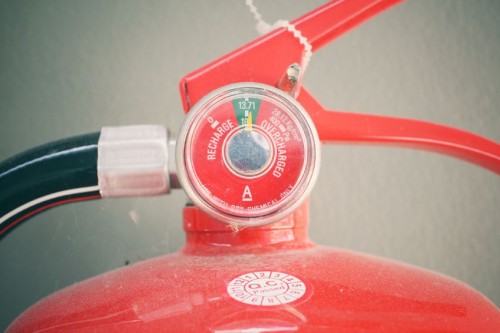 To help combat the spread of COVID-19, many offices are allowing employees to work from home. But few companies can shut down completely and must have at least some workers coming to the office each day. Here are some recommendations from the Centers for Disease Control and Prevention to help keep COVID-19 from spreading in your workplace, even with reduced staffing levels:
To help combat the spread of COVID-19, many offices are allowing employees to work from home. But few companies can shut down completely and must have at least some workers coming to the office each day. Here are some recommendations from the Centers for Disease Control and Prevention to help keep COVID-19 from spreading in your workplace, even with reduced staffing levels:
Encourage good hygiene. Send hand washing reminders by e-mail and encourage all employees to wash their hands immediately after reporting to work. Post hand-washing reminders in the bathroom. Make hand sanitizer freely available wherever employees are. Remind employees to avoid touching their faces and cover coughs and sneezes.
Stop hand shaking. Use other non-contact methods of greeting. Try to keep employees who are in the office separated as much as possible.
Step up cleaning efforts. Surfaces like doorknobs, tables, desks, and handrails should be disinfected more frequently.
Use videoconferencing for meetings when possible. When not possible, hold meetings in open, well-ventilated spaces. Consider postponing large meetings or gatherings.
Encourage sick workers to stay home. Studies show that many employees nationwide come to work even if they have a cold or flu. In some offices, it’s a badge of honor to come to work even if you aren’t feeling well. Make sure employees know that if they aren’t feeling well, have been tested for COVID-19 or have a member of their household with COVID-19, they should stay home. The coronavirus can incubate from anywhere between 2-14 days. In the early stages, it doesn’t always present symptoms and some people who have it do not have significant symptoms.
Assist employees who are at higher risk. Some employees, such as older adults and those with chronic medical conditions, may be at higher risk for serious illness. Employers may want to consider minimizing face-to-face contact between these employees and other employees or customers and/or assigning work tasks that allow them to maintain a distance of six feet from other colleagues and customers.
Don’t forget about mental health. The coronavirus pandemic is having wide-reaching effects on almost every aspect of American life. Understandably, many people report feeling anxious, afraid and unsure about what’s next. You can’t predict the future, but you can encourage your employees to care for their mental health — whether they are at home or at the office.

 Each year, tens of thousands of small businesses cope with damage from fires. Sadly, a number of these companies never re-open. That’s why taking steps to reduce the risk of fire at your business is such a smart thing to do. But it also can save you money.
Each year, tens of thousands of small businesses cope with damage from fires. Sadly, a number of these companies never re-open. That’s why taking steps to reduce the risk of fire at your business is such a smart thing to do. But it also can save you money. It’s estimated that on-the-job stress costs U.S. companies more than $300 billion annually in increased absenteeism, reduced productivity, increased health care costs and employee turnover. Stress, however, is a very individualized phenomenon — what causes stress in one person may not cause stress in another. The good news is that research has identified a number of stressors that often affect large groups of employees — and the ways employers can help address them.
It’s estimated that on-the-job stress costs U.S. companies more than $300 billion annually in increased absenteeism, reduced productivity, increased health care costs and employee turnover. Stress, however, is a very individualized phenomenon — what causes stress in one person may not cause stress in another. The good news is that research has identified a number of stressors that often affect large groups of employees — and the ways employers can help address them. It’s no secret that the different parts of our lives are all connected. Even if you don’t bring your work home with you in a briefcase, the spillover between the professional and personal is unavoidable. With that being the case, the way we look at workplace safety should also be part of a bigger picture of general wellness. Some common health issues we might consider include:
It’s no secret that the different parts of our lives are all connected. Even if you don’t bring your work home with you in a briefcase, the spillover between the professional and personal is unavoidable. With that being the case, the way we look at workplace safety should also be part of a bigger picture of general wellness. Some common health issues we might consider include: Do you need to hire a new employee? The process of advertising a job, screening applicants, scheduling interviews and making the final selection of a new employee creates a level of risk. As a small business owner, you have many legal responsibilities under federal employment anti-discrimination laws.
Do you need to hire a new employee? The process of advertising a job, screening applicants, scheduling interviews and making the final selection of a new employee creates a level of risk. As a small business owner, you have many legal responsibilities under federal employment anti-discrimination laws. your employees with the information and education they need to prevent injuries, accidents and losses in the first place. Here are some of the key areas in which to focus your employee safety training.
your employees with the information and education they need to prevent injuries, accidents and losses in the first place. Here are some of the key areas in which to focus your employee safety training. When it comes to business insurance, there’s a lot to know. Just like your business itself, there are a lot of pieces. That’s why it pays to partner with an expert insurance firm to answer your questions and make sure all your insurance coverage needs are met.
When it comes to business insurance, there’s a lot to know. Just like your business itself, there are a lot of pieces. That’s why it pays to partner with an expert insurance firm to answer your questions and make sure all your insurance coverage needs are met. Safety training isn’t just a formality — it’s a tested means of reducing serious injuries and cutting back days-away-from-work incidents. But all too often, training is conducted half-heartedly or not at all.
Safety training isn’t just a formality — it’s a tested means of reducing serious injuries and cutting back days-away-from-work incidents. But all too often, training is conducted half-heartedly or not at all. Winter always seems to be a busy season, which is odd considering how strong the urge can be to just hibernate through it and skip the whole thing. From a worker safety standpoint, we’re not exactly crazy about the season, but the fact is, it rolls around each year like clockwork, bringing its own work-related challenges.
Winter always seems to be a busy season, which is odd considering how strong the urge can be to just hibernate through it and skip the whole thing. From a worker safety standpoint, we’re not exactly crazy about the season, but the fact is, it rolls around each year like clockwork, bringing its own work-related challenges. Think businesses that have primarily office workers don’t have to worry about workplace safety and risk management? Think again! Accidents happen in all kinds of companies. In fact, many workers’ comp claims are made by workers who spend much of their time behind a desk — not at a construction site or in a manufacturing facility.
Think businesses that have primarily office workers don’t have to worry about workplace safety and risk management? Think again! Accidents happen in all kinds of companies. In fact, many workers’ comp claims are made by workers who spend much of their time behind a desk — not at a construction site or in a manufacturing facility.